Find out more about our medieval villagesTalking about the capital city of Spain is obviously synonym of talking about History. Even though Madrid is considered to be a truly cosmopolitan city the fact is that its foundations lay deep into its historic past. Evidence of this are the centuries old buildings of museums and manor houses dotting the cobbled streets and living peacefully, side by side with the most modern restaurants, bars and art galleries. Madrid feels like a constant surprise, a city where we go through neighborhoods designed millennia ago and realize in amazement, that all the modern structures fit in there perfectly, sometimes even recreating the meaning and providing for new interpretations of the Past.
Let us now guide you through some of the most iconic neighborhoods of Madrid. Even though we can sub divide the city into 21 different sections today we narrow our choice down to the most emblematic ones. We invite you to hear the calling of the Old World with all the perks of the modern life. Here is Madrid, an amazing city for your delight and to discover at your own pace.
Barrio de las Letras
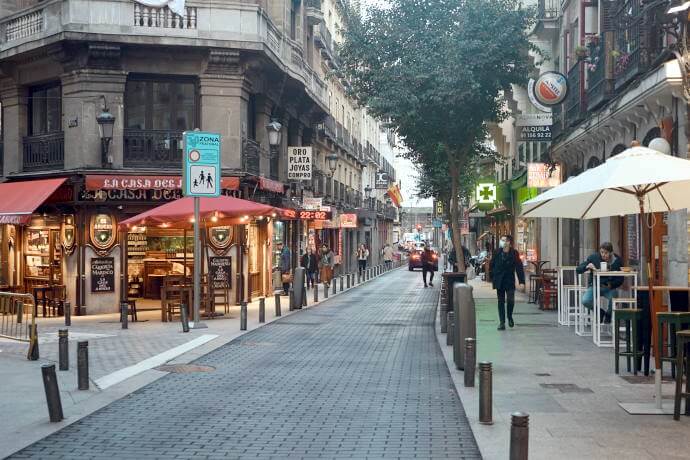
Have you ever experienced a feeling of walking between book passages? Have you ever dreamed of being part or even being the main character of a novel? If the answer is yes then you need to get to know the amazing Barrio de las Letras.
Take your time and let yourself be carried away by paragraphs of literature printed in a beautiful golden color. Modern stores, design stores, convents, palaces, luxury hotels, bars, taverns, restaurants, museums, squares, and a succession of streets where Madrid gives us its history, its culture, its gastronomy, and of course, its letters!
The quarter is perfectly fitted between the famous streets of Atocha, Carrera de San Jerónimo and Paseo del Prado, with Carretas street closing the triangle. To enter the Barrio de las Letras is to submerge into the living history of the Spanish Golden Age. Come feel the living pulse of this wonderful neighborhood and discover with your own eyes the surprises awaiting you in each corner.
Chueca
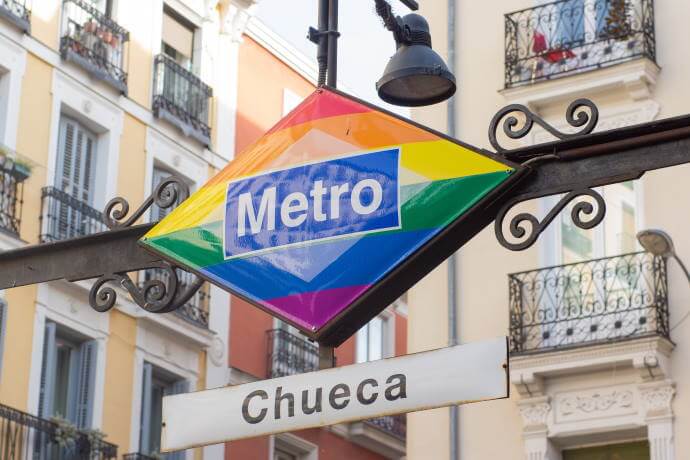
Chueca is one of the best-known neighborhoods in Madrid. Between the Plaza de Chueca and the streets of Barquillo, Hortaleza and Fuencarral, this is also where the epicenter of gay life in Madrid is located.
It is one of the most central areas of the city and a perfect place to get to know the real Madrid. If you like the hustle and bustle and being close to the main attractions, this is your place!
This mythical neighborhood of Madrid is very famous for its lively night life and has entertainment options for everyone, whether for a dinner out, a few drinks on a terrace or to dance the night away!
The name of the square and metro station is in tribute to Federico Chueca, a great Spanish composer who died in the early 20th century. Although officially this is part of the Justicia neighborhood, the whole area around the square is popularly known as Chueca.
The modern and renovated Mercado de San Antón is one of the icons of this quarter. In the same space you will find food stalls, cultural activities, tasting stands and a restaurant with a bar on the terrace, overlooking the neighborhood.
Malasaña
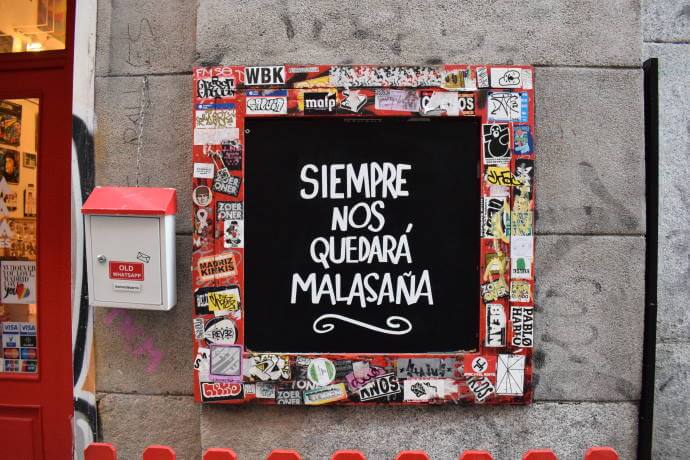
Malasaña is one of the most modern, hipster and eclectic neighborhoods of Madrid. In the eighties, it was the epicenter of Madrid’s nightlife and nowadays, it is constantly transforming, setting trends throughout the city. Like the nearby Chueca, Malasaña is not officially a neighborhood, as it belongs to the Universidad neighborhood. The area is a profusion of narrow streets, many of them pedestrian, where you will find street markets, designer stores, cafes, restaurants, bookstores, barbershops and where it is even possible to rent a bike to cycle across the city.
It was formerly known as the Barrio de las Maravillas, after the convent of the same name. The name of the neighborhood is a tribute to Manuela Malasaña, heroine and victim of the uprising of May 2, 1808 when the population of Madrid rose up against Napoleon's troops. In fact, the heart of the neighborhood is located in the Plaza 2 de Mayo.
The Malasaña area has Gran Vía in its southern part, San Bernardo Street to the west, Carranza to the north and Fuencarral street to the east. Malasaña is one of the centers of the movida madrileña and there are many mythical places that have retained the same bohemian aura for centuries.
Before you go, you might want to head off to one of the historical bars or take a tour around the Conde Duque Center, which offers a variety of cultural activities.
Salamanca
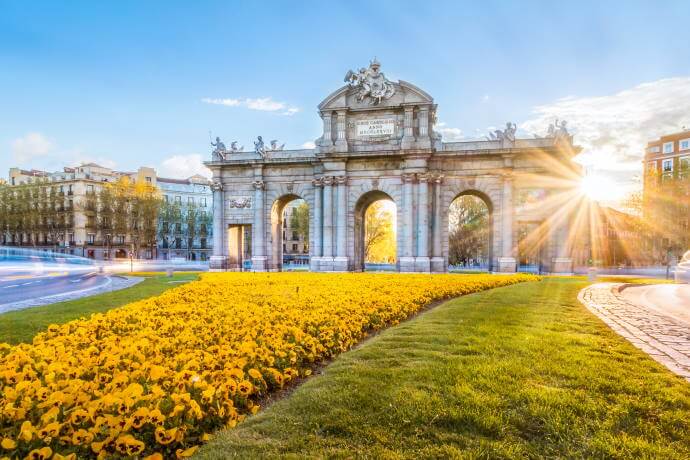
It is the most aristocratic district and one of the most luxurious in the center of Madrid. It is made up of six smaller neighborhoods in total: Lista, Castellana, La Guindalera, Recoletos, Goya and Fuente del Berro.
Although it originally began as a purely residential neighborhood, Salamanca is currently an important commercial, cultural and leisure activity hub. Roads such as Paseo de la Castellana and Calle Serrano, as well as the streets Ortega y Gasset or Príncipe de Vergara, are a paradise for luxury shopping in Madrid, one of the main offers of this neighborhood.
The numerous places of interest in the Salamanca neighborhood make it a very touristy yet unmissable area of Madrid. Walk through the Puerta de Alcalá one of the former five gates of Madrid and the Alcalá Street, a busy commercial artery of the capital city. Further ahead you will pass the Las Ventas Bullring, the impressive structure is the third largest bullring in the world! Behind Serrano Street you will find the headquarters of the National Library, a place to walk around and learn about the early writings of Don Quixote.
Very close to the Retiro Park is the Casa Árabe, a cultural center built in 2006, with the intention of promoting the culture of the Arab and Muslim world. Many artistic, cultural and inclusive events are held here. The National Archaeological Museum, located at the end of Paseo de Recoletos is the main archaeological museum in Spain. It houses an outstanding collection of pieces from the Iberian Peninsula, Ancient Greece and Ancient Egypt.
Finally, we highly recommend a visit to the La Paz Market. Inaugurated in 1882, this market of Parisian air, offers almost 60 food stalls and all kinds of products. How about if you plan for a picnic in one of the many parks of the city? You can get your food from here and then all you have to do is to sit on the lawn with a glass of wine in one hand, enjoying the views!
Chamberí
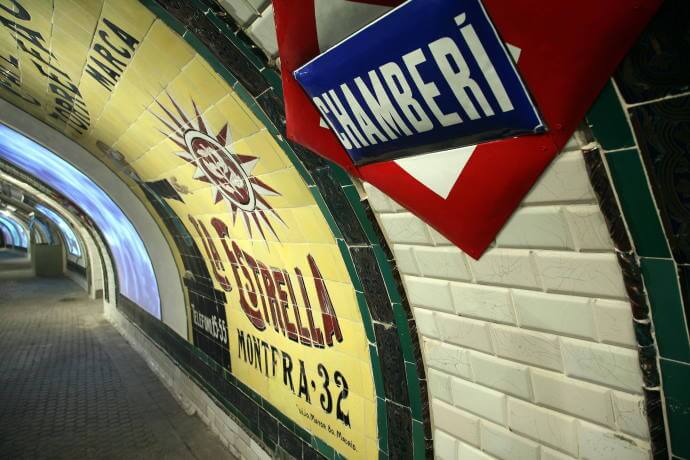
Chamberí is one of the districts in the center of Madrid. It is made up of the neighborhoods of Trafalgar, Arapies, Gaztambide, Almagro, Ríos Rosas and Vallehermoso. Its streets boast the architectural legacy of Madrid's most traditional aristocracy, who lived here during the 19th and 20th centuries. One of the most important buildings in the neighborhood is Nuevos Ministerios as it houses currently the headquarters of various ministries.
Some of the attractions you can visit in Chamberí are Platform Zero, the old Chamberí subway station, closed since 1966 and now restored to its original appearance after decades of neglect; and the Sorolla Museum a museum dedicated to the Valencian painter, in the house where he lived and worked for part of his life.
Madrid’s cultural and social life is well represented in this diverse neighborhood with several museums, beautiful theaters, many shopping opportunities and delicious gastronomy available in every street.
La Latina
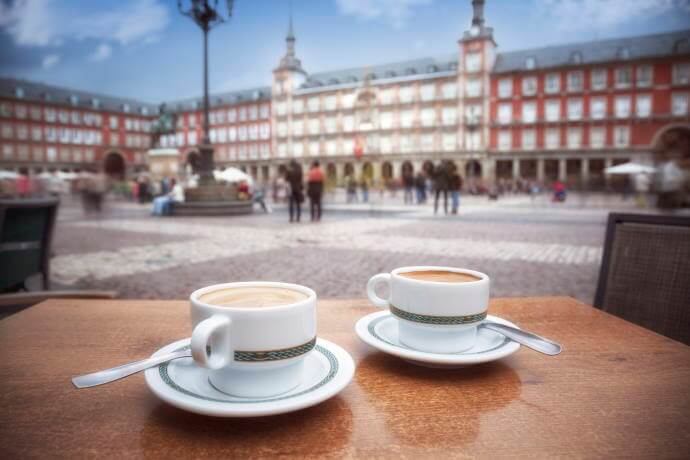
La Latina, located in the heart of Madrid, is undoubtedly one of the liveliest neighborhoods of the capital. Presently, it is the official meeting point for the locals to have a few beers or to start a night out in the city.
It borders with other areas of great interest in Madrid, such as the neighborhood of Lavapiés, Sol and Gran Vía and the area of Madrid Río. Its streets of medieval origin, are home to landmarks in Madrid such as El Rastro, the famous miles-long flea market held on Sunday morning, as well as charming squares and markets.
La Latina is one of the most fascinating barrios with places like the Basilica San Francisco El Grande built in the second half of the 18th century, home to an important collection of paintings, reliefs and sculptures worth visiting and boasting a grandiose dome, one of the largest in Europe. In fact, it is the third largest dome in Christendom, behind only the domes of the Pantheon in Rome and St. Peter's Basilica in the Vatican.
You might also want to pop in the San Isidro Museum, also known as "The Origins of Madrid" as the museum goes through the history of the city ever since the prehistoric times and it is located on the site of the former Palace of the Counts of Paredes, where San Isidro is said to have lived. The building, completely reconstructed, still has parts of its original structure of the 16th and 17th centuries.
In medieval times, the area now occupied by La Latina corresponded to the suburbs of the city, in an area outside the citadel and you had to go through the Puerta de Toledo to access it. Here many merchants came to sell their goods and many of the squares of the neighborhood have taken the name of the commercial activity that took place. Such is the case in places like the Plaza de la Cebada (The Barley Plaza), the Plaza de los Carros (The Carriages Plaza) or the Plaza de la Paja (The Straw Plaza). Nowadays, these and other places such as Plaza San Andrés or the streets of Cava Alta and Cava Baja, are some of the favorite areas for locals to go for tapas or sit on a terrace. We bet they will become your favorites as well!
Lavapiés
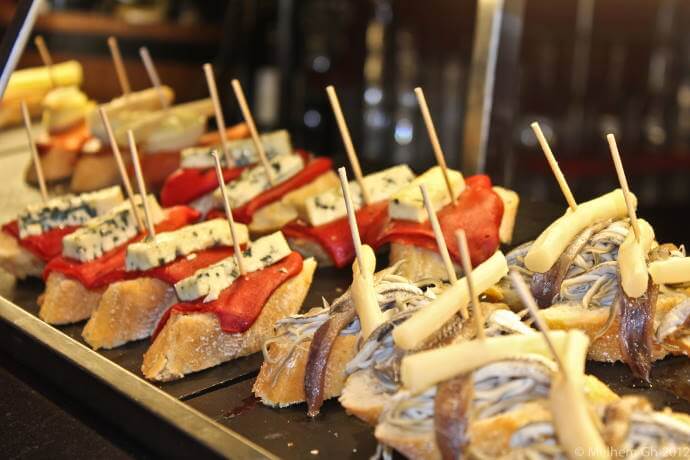
Lavapiés is one of Madrid's most traditional and multicultural neighborhoods. Like La Latina, it is a maze of steep labyrinthine streets that extended outside the city walls. For centuries, Lavapiés has been inhabited mainly by the working classes. Altogether, more than one hundred different nationalities live here, giving rise to a cultural melting pot of local and foreign traditions. Remember that it is also a good neighborhood to eat in Madrid!
It is believed that the origin of the name Lavapiés (Feet Wash, literally), comes from the fountain that existed in the neighborhood square until the late 19th century. One of its most iconic buildings are Las Corralas, which is a set of buildings ordered to be built in response to the rural migration of the 19th century. These small community buildings, have wide corridors with a shared courtyard in the center and are a live testimony to the humble history of the site. These days, Lavapiés offers a wide range of cultural and leisure activities, within walking distance of many of the main monuments of Madrid.
So much to do and so little time? There are a few must-go places in this part of town such as the Reina Sofia Museum one of the icons of Lavapies. This museum, one of the most important in Madrid, is dedicated to contemporary and 20th century art. It is one of the main museums of modern art in the world. Another great place to go is La Casa Encendida, an interesting cultural center, where all kinds of free activities and events related to the arts occur. The place is frequented by artists and young people and also offers programs for children.
There is a wide variety of bookstores and theaters as part of the cultural and social scene here, such as the Valle Inclán theater or the Teatro Circo Price, a circus set up in an old cookie factory.
El Retiro
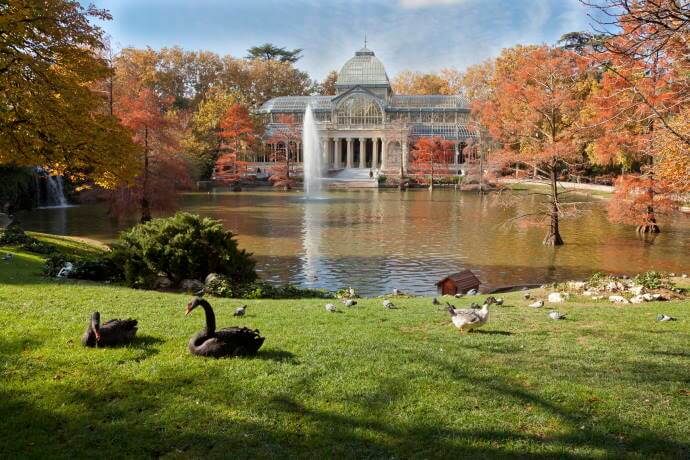
El Retiro is an elegant residential neighborhood that is home to the famous Parque del Buen Retiro, from which it gets its name. It is one of Madrid's central districts and consists of six neighborhoods: Pacífico, Adelfas, Ibiza, Estrella, Jerónimos and Niño Jesús. Despite its residential character, the district of El Retiro is home to some of the most well-known monuments of Madrid and has a great cultural and recreational offer.
Its proximity to the center of Madrid, as well as to the neighboring district of Salamanca, make it an unmissable area within the city. If you are looking for a quiet and central place to rest or to simple watch passers-by then take some time to enjoy the greenery around El Retiro. Although it is not the largest park in the city (a distinction that belongs to Casa de Campo), El Retiro is a haven of peace and nature, which has been adorned with impressive sculptures, pavilions and gardens. Still within the premises you can find the famous El Prado Museum, one of the most important art museums in the world. Its collection includes an incredible array of works by the best European painters and artists from the 16th to the 19th centuries. Further ahead you will come to Cibeles Square, the most emblematic of the squares of Madrid. It takes its name from the Greek goddess Cybele, which is represented by a statue in the center of it.
At the southern end of the district, Atocha is the most important railway station in Spain. Even if you are not going to travel by train, it is worth a visit to this historic building, from where trains depart to all ends of the Iberian Peninsula. Finally, be sure to take a look at other must-see places in the Retiro district such as The Neptune Fountain, The Palacio de la Bolsa de Madrid; the Spanish Royal Academy; the Casa de la Moneda Museum or the Torrespaña, telecommunications tower, popularly known as "El Pirulí".
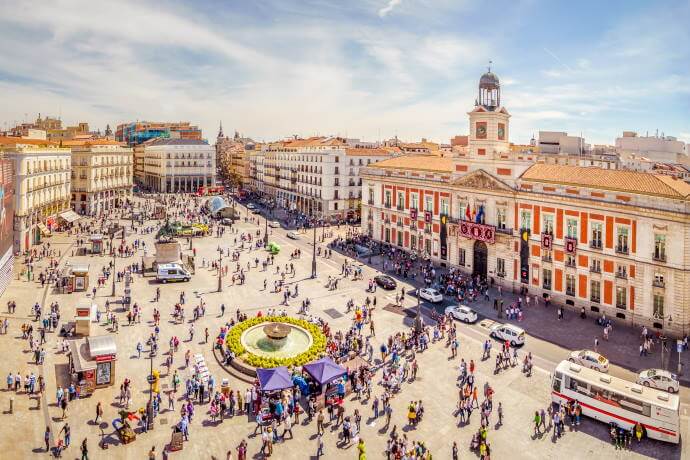
It is easy to feel overwhelmed in Madrid at times, as the city holds such a variety of things to see and places to go. In such a vibrant city, with so much happening at the same time and so much History to absorb, present in every stone, every building, every tradition, choosing where to start may be a challenge. We hope this brief guide can somehow contribute to make that choice easier and that even before you go you will know which ones align better with your expectations and hopes for what we know will be a memorable time in España!



